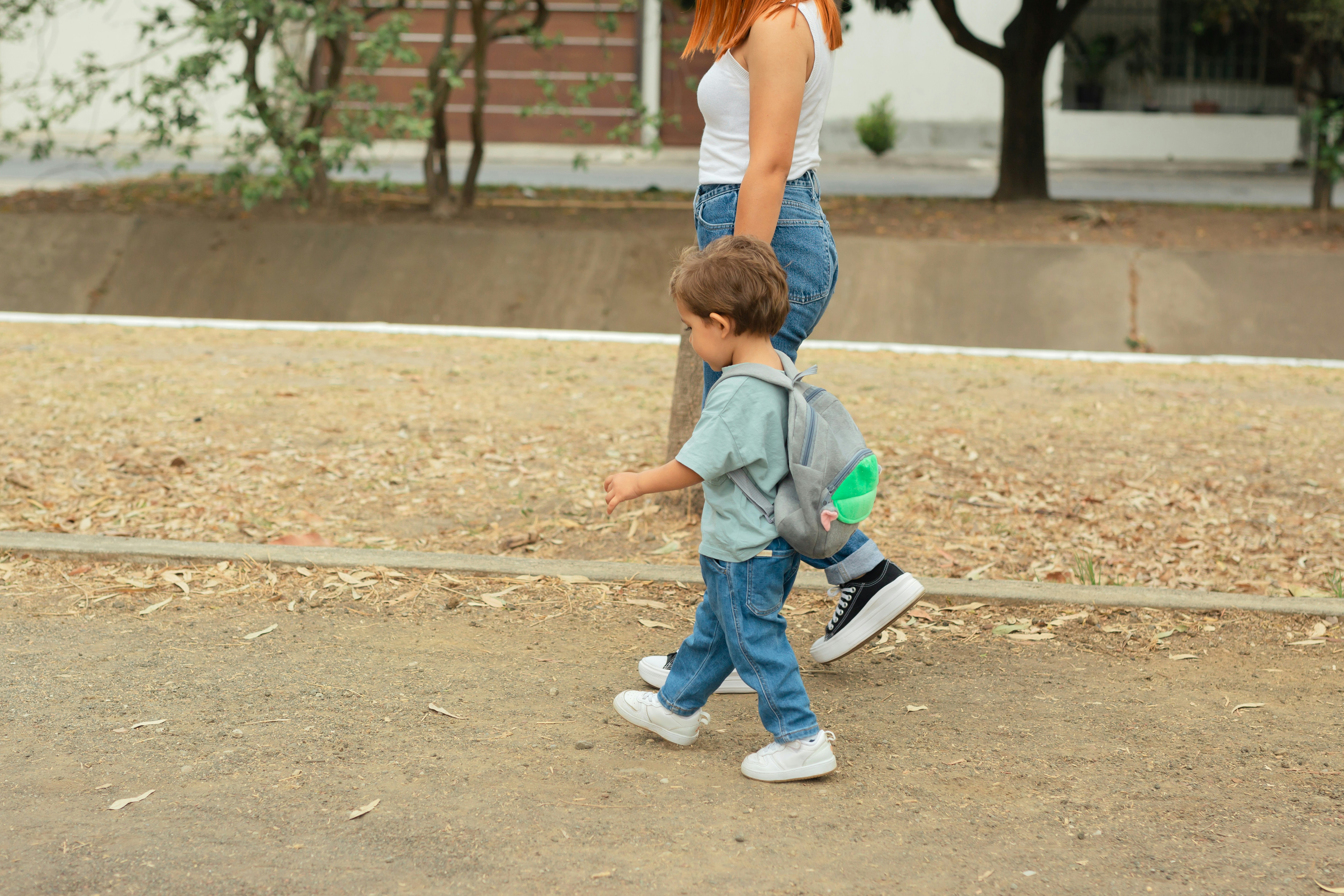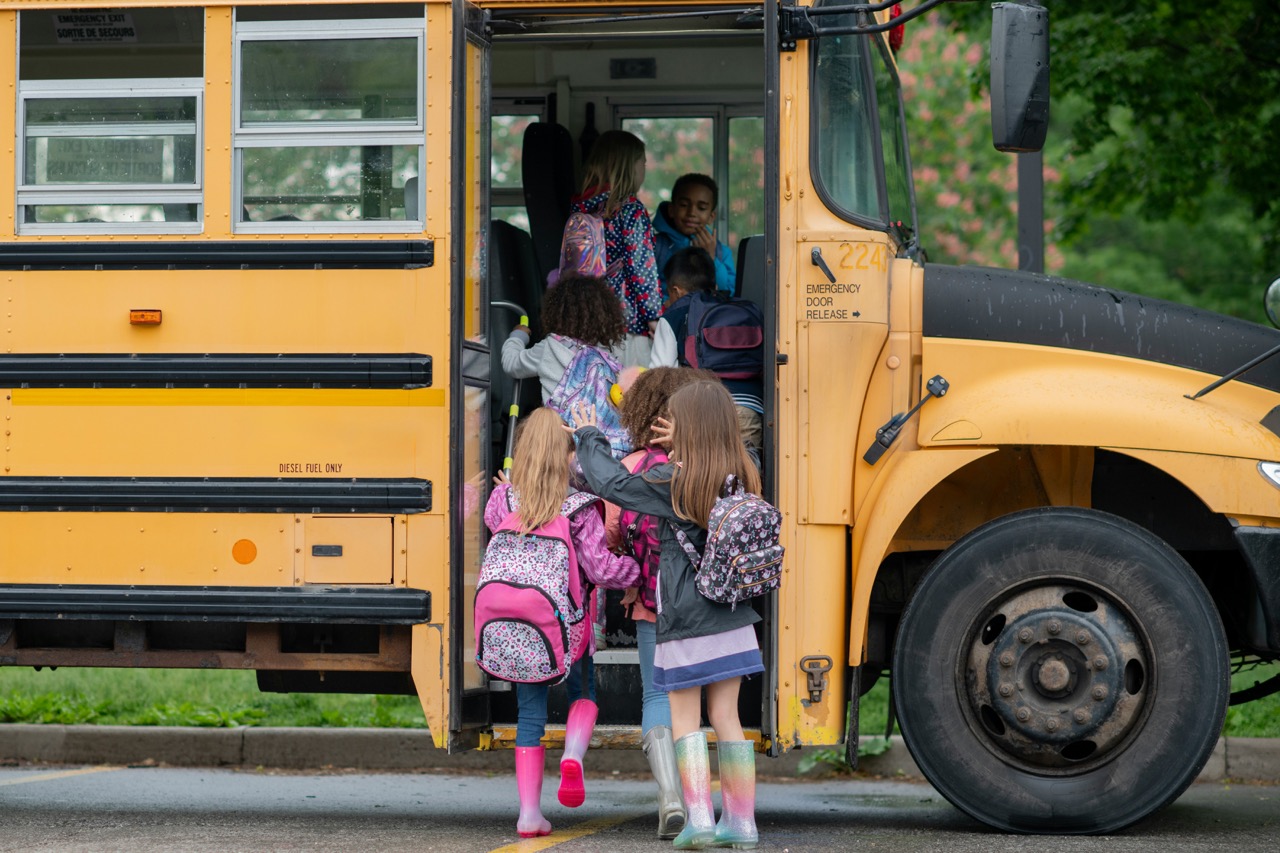The start of a new school year brings a wave of change. Children have new routines, new teachers, and big feelings about separating from home. As a therapist, I often see this time of year stir up intense emotions in both kids and parents.
While there may be excitement, it’s also common for anxious feelings to surface including separation anxiety which are common during the start of the school year. Separation anxiety is the distress a child feels when they're away from a parent or caregiver, especially in unfamiliar settings or transitions. It’s a normal part of development, particularly in early childhood, and it’s one of the most common concerns parents bring to therapy during the back-to-school season.
Caregivers might notice their children showing hesitation in situations that previously felt comfortable, increased reluctance to try new things, or resistance to separating from trusted adults.
Children may also express their stress through physical symptoms like stomachaches or headaches, refusal to sleep without caregivers close, recurring “bad dreams” or nightmares, and children may seek more closeness, comfort, and reassurance from caregivers. These are common signs of adjustment to something new that is important for caregivers to notice, and are likely signs of separation anxiety.
What’s Typical Separation Anxiety at Different Ages
Some separation anxiety is completely normal, just like with any new or unfamiliar situation, most children just need time to adjust. Below are common presentations of separation anxiety by age:
Toddlers (1–3 years)
For toddlers, separation anxiety tends to be especially strong because they’re deeply attached to their caregivers while just starting to explore independence.
Separation anxiety typically peaks between 10–18 months, which aligns with a developmental stage when children haven’t yet developed object permanence, the understanding that people exist even when they’re out of sight. Without this understanding, a caregiver’s departure can feel like a complete disappearance, which can be deeply distressing and why some degree of separation anxiety before age 3 is considered developmentally typical.
This can manifest in different ways:
- Crying at daycare drop-off, resistance being left in the care of other adults
- Needing one specific caregiver for comfort
- Reliance on a comfort object like a blanket, pacifier, or stuffed animal
Preschoolers (3–5 years)
During the preschool years, children are still gaining independence, they still rely heavily on routines and familiar people to feel secure. A lot of their separation anxiety is tied to new transitions, like starting preschool which can show up as:
- Worry beginning before the separation happens like the night before school
- Some regression navigating tasks independently or resistance during big changes
- Efforts to avoid separation like hiding, tantrums, crying and clinginess
- Reports of belly aches and “bad dreams” are common
Read When Drop-Off Becomes a Daily Battle: Back-to-School Tips from a Behavior Specialist for more insights.
School-Aged Children (6–12 years)
At this age, kids have increased ability to verbalize and express their worries. Separation anxiety can manifest differently including:
- Emotional meltdowns or big emotional responses to small things that seem out of character
- Verbalizing fears and reluctance around anxiety provoking situations, like the new school year
- Watch for: frequent nurse visits, headaches, reluctance to go to school
- Worries about losing caregivers to injury, illness or natural disaster
Teens (13–18 years)
While separation anxiety is less common in teens, it still happens especially after a loss, trauma, or during major life changes:
- Constant texting/check-ins, refusing overnight trips, panic attacks before school
- Often masked as defiance or withdrawal
- Difficulty forming or maintaining friendships
- Resistance or reluctance of being alone or sleeping away from home
- Reports of not feeling well, desire to stay home sick, headaches stomachaches
When Separation Anxiety is More Than Just a Phase
While some separation anxiety is a normal part of development, Separation Anxiety Disorder is more intense, persistent, and interferes with a child’s ability to function in daily life. Signs of Separation Anxiety Disorder include:
- Intense distress that doesn’t improve over time, lasting more than 4 weeks
- Physical symptoms without a medical explanation
- School refusal or disruptions in activities, friendships and family routines
- Anxiety showing up as anger, defiance, or emotional shutdown
If these challenges are disrupting your child’s daily life and your family’s well-being, it’s time to seek support. Therapy can help your child feel safer, more secure, and better equipped to navigate separation.
Therapists Can Help with Separation Anxiety
A child doesn’t necessarily have to be dealing with Separation Anxiety Disorder to address their separation anxiety in a clinical setting. Kids with any type of mental health challenge can benefit from seeing a therapist. Approaches therapists may use for separation anxiety and Separation Anxiety Disorder include:
- Toddlers/Preschoolers: play-based approaches, dyadic work with child and caregiver, and caregiver coaching
- School-aged kids: Cognitive Behavioral Therapy (CBT), exposure therapy, caregiver involvement in therapy and coaching support
- Teens: Individual therapy with coping tools and space to process independence, caregiver coaching
- With parents: Strengthening the caregiver-child bond and working to reduce accommodations of anxiety using Supportive Parenting for Anxious Childhood Emotions (SPACE) program
A full diagnostic evaluation is helpful to better understand the child’s needs, especially if anxiety has become excessive and is impacting the child’s daily functioning. Interested to see if Little Otter's services might be right for your family? Get started below!
!CTA-6
What Parents Can Do at Home for Separation Anxiety
While it might feel natural to want to ease a child’s separation anxiety by supporting them in avoiding the things that make them anxious, gently encouraging them to face those situations is actually more helpful in the long run. This approach is called exposure and it allows children to build confidence and develop coping skills as they learn they can handle challenging moments with support.
Children start by being exposed to anxiety provoking situations in small doses that increase in intensity overtime, children employ coping skills throughout and learn over time that they can manage the anxiety provoking situation and they don’t need to avoid it any longer.
Toddlers
- Practice short separations like going in another room and returning
- Use transitional objects like a special stuffed animal or picture
- Keep goodbyes brief, consistent and predictable
- Express confidence and trust in the adults the child will be staying with while you are away
- Communicate with teachers or childcare staff to support a smooth transition
Preschoolers
- Establish a consistent predictable transition routine that you can review with the child
- Use visual schedules to show the daily routine, this helps children know what’s coming next and see that they will be reunited with caregivers later
- Prepare for transitions ahead of time, visit school before the first day so children can explore the environment ahead of time, read books together about the first day of school and talk through the steps you will take during the transition (“First we’ll drive to school, then I’ll walk you to the door…”)
- Avoid sneaking away, say goodbye with confidence
- Connect with the child’s teacher to support the development of a drop off plan, as needed
School-Aged Kids and Teens
- Validate their worries without over-reassuring, express confidence that while the situation makes them worried or scared that they’ve done things before that felt scary in the end they were ok and they can do it again
- Let them take age-appropriate responsibility like packing lunch, walking part of the way on their own
- Create calm morning routines and consistent rituals, visuals are great for older kids too
- Reading books about family connection and using special objects to remind them of their connection to caregivers are great for school aged children too
Caregivers want to express confidence in their child’s ability to manage the anxiety provoking situation while validating their feelings and providing consistent transition rituals. Caregivers are encouraged to generally steer clear of sneaking out to avoid a meltdown, this can unintentionally increase distrust, reinforcing avoidance leaving the child without support during a distressing time.
Little Otter created a worksheet for Transitioning To & From School to help reduce separation anxiety. Download the worksheet below!
!CTA-4
How to Talk to Your Child About Their Worries
One of the best tips I have for parents is to use age-appropriate language to validate feelings and build their confidence. You don’t have to skirt around the issue. Just remember 1-2 of these phrases so you have them in your pocket and repeat them as a motto for your child!
Younger kids:
- “Your brain is trying to keep you safe, even when you’re okay.”
- “It’s okay to feel nervous. Let’s practice being brave together.”
- “I always come back. You’ll play with your teacher, then I’ll pick you up after snack time.”
- “I see you're feeling nervous about school. That’s okay, we can be brave and do it anyway.”
Older kids:
- “Anxiety is just your body’s alarm system—it can go off even when there’s no real danger.”
- “Let’s figure out what your worry is saying and what you can say back.”
- “It makes sense to feel worried before the first day. What’s one thing that might help?”
- “You don’t have to handle this alone. Want to talk through what’s feeling hard right now?”
If your child is struggling to separate, it doesn’t mean you’ve done anything wrong. In fact, it often means your child feels deeply connected to you and is learning how to hold that connection even when you’re not physically there.
Early support can make a big difference. The goal isn’t to get rid of anxiety completely, it’s to help your child feel capable and confident, even when the worry shows up.
!CTA-1
in this article
%20Large.jpeg)

%20Large.jpeg)


.jpg)
.jpg)
%20Large.jpeg)








.svg)

